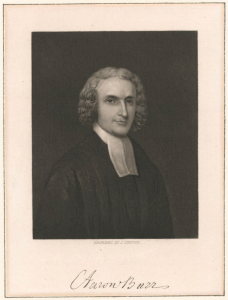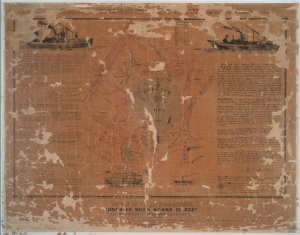A black 1963 Oldsmobile Ninety-Eight crept quietly through the narrow streets of Greenwich Village and settled in front of 92 Grove Street—Alex Haley’s modest, subterranean studio apartment. For over two years, it parked there more than fifty times, its presence unnoticed by most passersby. But on February 21, 1965, that same Oldsmobile made a final stop—not in the Village, but outside the Audubon Ballroom in Harlem. When it departed that evening, it did not carry Malcolm X home. It carried the memory of his last breath and the burden of a revolution unfinished.
The Oldsmobile, a sleek, somber symbol of the man who drove it, now resides at the Smithsonian’s National Museum of African American History and Culture in Washington, D.C.—its worn steering wheel and cracked leather seats a relic of resistance.
But before the car became an artifact, it was a vessel of transformation. And for two years, it idled faithfully outside a basement where one of the 20th century’s most incendiary and essential narratives took shape.
The Village Studio: A Room of Smoke and Memory
Haley’s studio was no more than eight feet wide and ten feet deep. Its air was dense with the musk of old paper, cigarette smoke, and midnight coffee. The walls, lined with books and drafts, heard whispered regrets, suppressed memories, and the sound of a man reshaping his legacy.
It was in this dim, confined space that Malcolm X—tall, unsmiling, clad in a tightly tailored black suit and narrow tie—paced like a caged prophet. He arrived late, sometimes near 10:00 p.m., after a long day preaching at Mosque No. 7 or navigating the volatile labyrinth of Harlem’s streets. Alex Haley sat behind a battered Royal typewriter, trying to keep pace with a man who, in public, was a lion—but in private, was beginning to shed his armor.
Their collaboration was not born of camaraderie but of uneasy necessity. Haley was a former Coast Guard journalist trying to prove himself as a serious writer. Malcolm, fiercely guarded, was suspicious of all journalists—and of Haley’s light complexion, which he associated with betrayal and compromise. What bound them was an urgent task: to tell the story of a life that had already become legend, even as death hovered.
“Describe Your Mother…”
In the early sessions, Malcolm delivered little more than doctrine. He parroted the Nation of Islam’s ideology, quoting Elijah Muhammad like scripture. Haley was frustrated. He wanted the man, not the minister. The breakthrough came one sweltering night in 1963.
“Describe your mother,” Haley asked, almost pleading.
Malcolm stopped mid-stride. The air changed. He was no longer the speaker. He was the son.
And the floodgates opened.

Nightmare: The Origins of Fury
Malcolm’s childhood was not merely defined by hardship—it was forged in racial terror and personal devastation. Born Malcolm Little in Omaha, Nebraska, he was just four when white-robed Klansmen rode up to their home in the dead of night, shouting threats and firing guns. His father, Earl Little—a proud Baptist preacher and an outspoken follower of Marcus Garvey—relocated the family to Lansing, Michigan, seeking safety. It was a vain hope.
In 1931, Earl’s mangled body was found pinned beneath a streetcar. The authorities ruled it an accident. But the injuries—his skull crushed and body nearly severed—suggested a lynching. Malcolm never accepted the official version. He was convinced the perpetrators were members of the Black Legion, a white supremacist terror group whose presence loomed over Black families in the Midwest.
Insurance companies refused to pay the family benefits, citing a “suicide clause.” Malcolm’s mother, Louise, already under psychological duress, descended into despair. With state welfare agents hounding her, critiquing her parenting and denying assistance, she suffered a breakdown and was institutionalized. Her children were divided among foster homes. Malcolm, uprooted and alone, became what society expected: a statistic, a delinquent, and eventually, an inmate.
Reflecting on these early years in Haley’s studio, Malcolm said bitterly:
“It has always been my belief that I, too, will die by violence. I’ve done all that I can to be prepared.”
His fury toward white America was not theoretical—it was experiential, elemental. He had witnessed the institution of whiteness crush his family under the guise of law, morality, and Christian decency.
“The white man had brought nothing but misery and hate to the world,” he said in the Autobiography. “Wherever he has gone, he has left behind a trail of blood and death.”

The Autobiography Becomes a Confession
After the breakthrough, the interviews became intimate, electric. Malcolm brought scraps of paper, scribbled notes, and fragments of memory. Haley, ever methodical, organized the chaos into chapters.
The studio became more than a workspace. It was a confessional booth, a forge for reinvention. Malcolm trusted Haley—“seventy percent,” he said, a staggering figure for a man as mistrustful as he was.
Haley witnessed the unmaking of Malcolm the Nation minister and the emergence of El-Hajj Malik El-Shabazz, a man who had walked through Mecca and seen a global brotherhood that transcended race. Yet, even in transformation, the pain of his youth remained.
“People don’t realize how a man’s whole life can be changed by one book,” Malcolm once said. The Autobiography became that book—for him, and for millions.

The Oldsmobile Returns
As 1965 dawned, the Oldsmobile returned to Grove Street less frequently. Malcolm was restless. He moved between safe houses. He looked over his shoulder often. His split from the Nation of Islam had made him a marked man.
At the Audubon Ballroom on February 21, 1965, Malcolm X rose to address a gathering of the Organization of Afro-American Unity. As he greeted the crowd, three assassins stepped forward. In 21 seconds, 21 bullets were fired. At least ten found their mark.

A Basement That Changed the World
The Autobiography of Malcolm X was published in October 1965—eight months after his assassination. Doubleday, fearing backlash, had dropped the manuscript. Grove Press seized the opportunity. The book became an instant classic, selling millions of copies, translated into dozens of languages, and required reading in schools and universities worldwide.
It redefined not only Malcolm’s legacy but the entire conversation around race, identity, and transformation in America.
Outside 92 Grove Street today, a discreet plaque honors the space where those midnight sessions unfolded. But the basement itself, once cramped and forgotten, now looms large in American history.

That tiny room produced not just a memoir, but a monument of consciousness. And the Oldsmobile that waited outside night after night—engine cooling in the dark—became the chariot of a man whose voice still thunders, who still compels us to confront our own history, and who once declared:
“I am for truth, no matter who tells it. I’m for justice, no matter who it is for or against.”
And so the car rolled, from Grove Street to the Audubon. From memory to martyrdom. From basement to canon.




